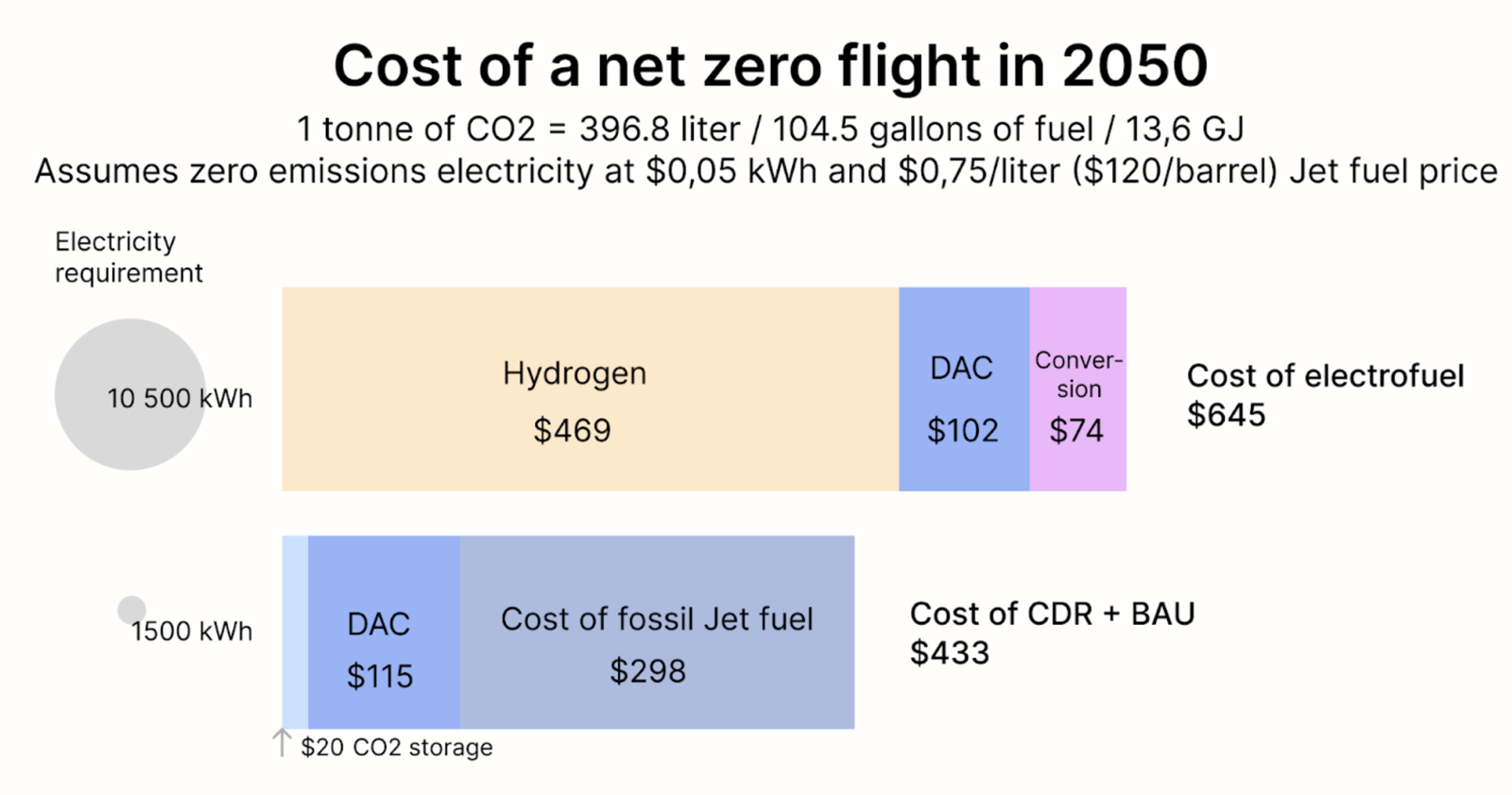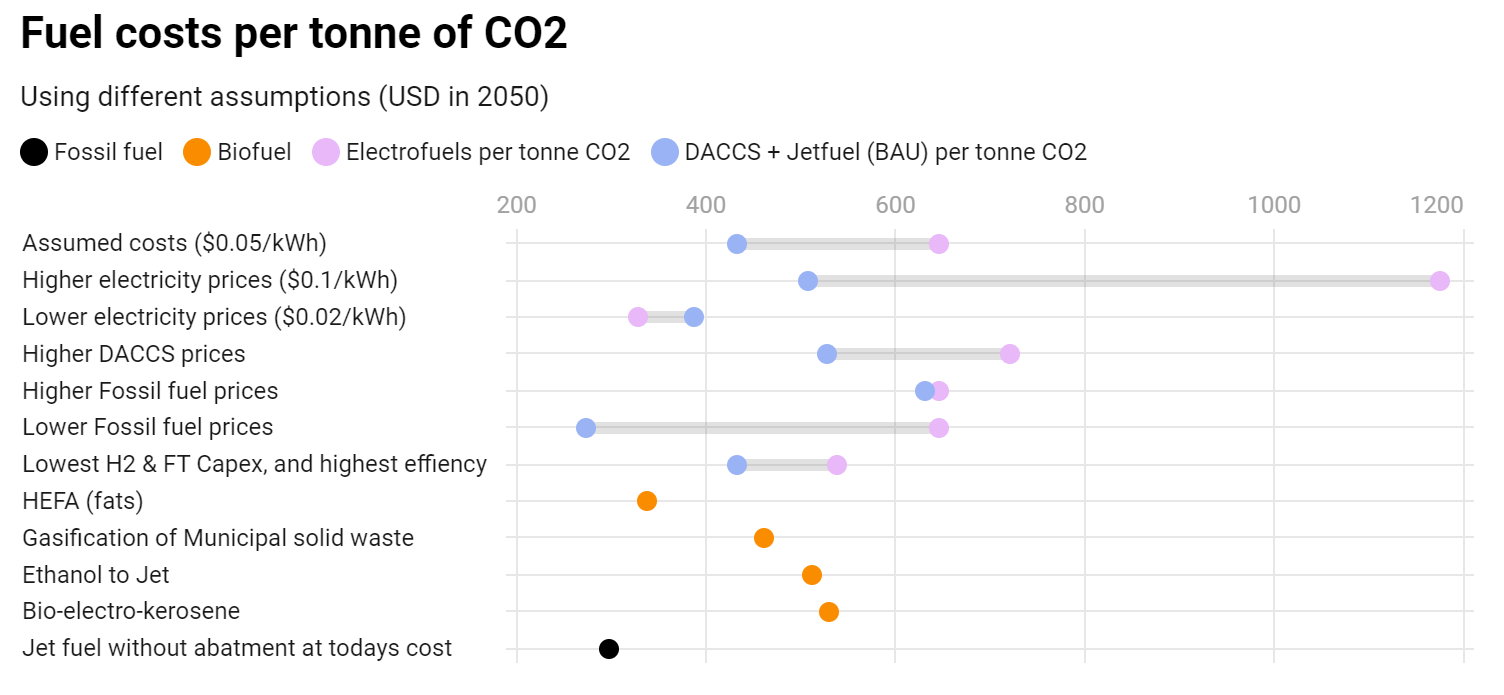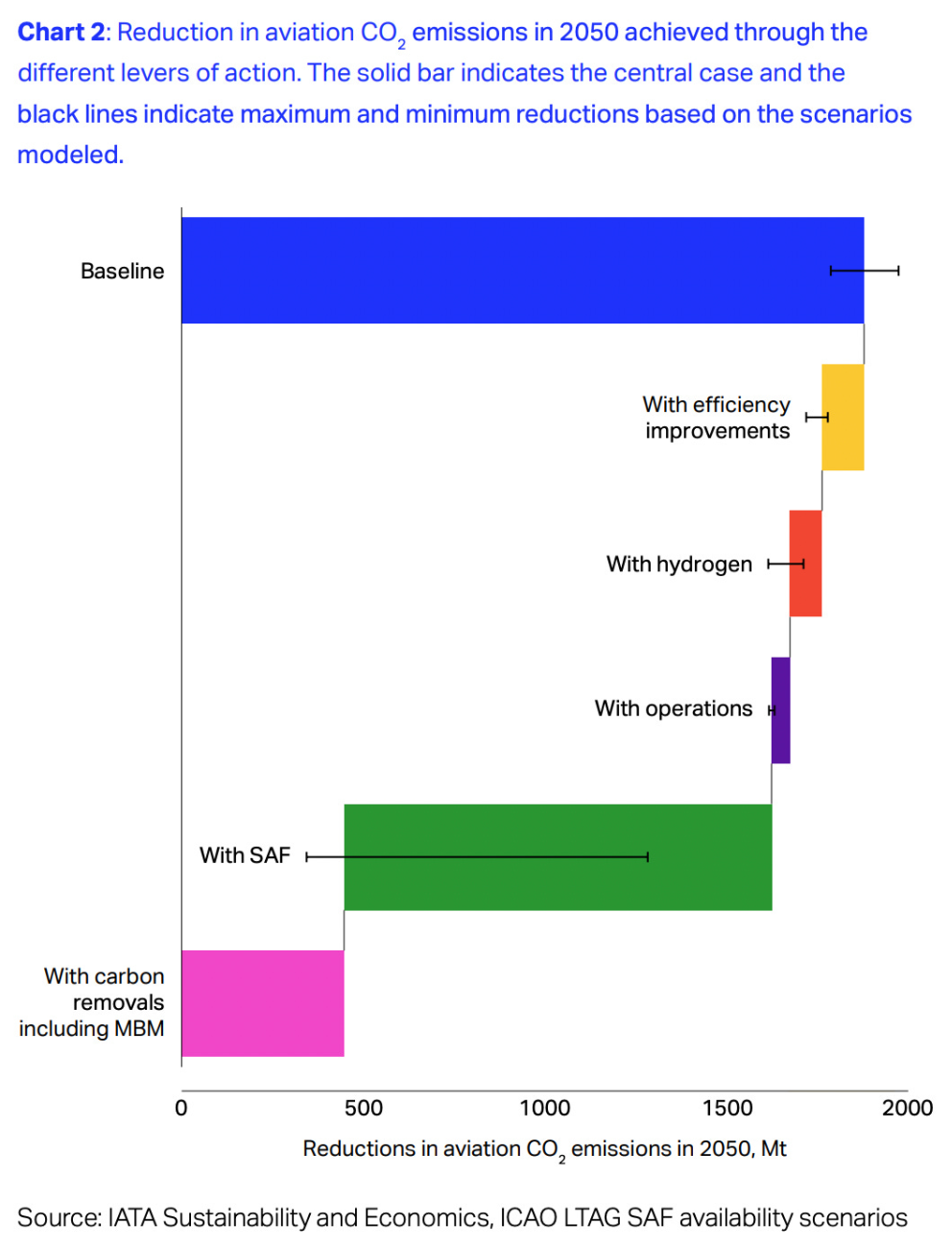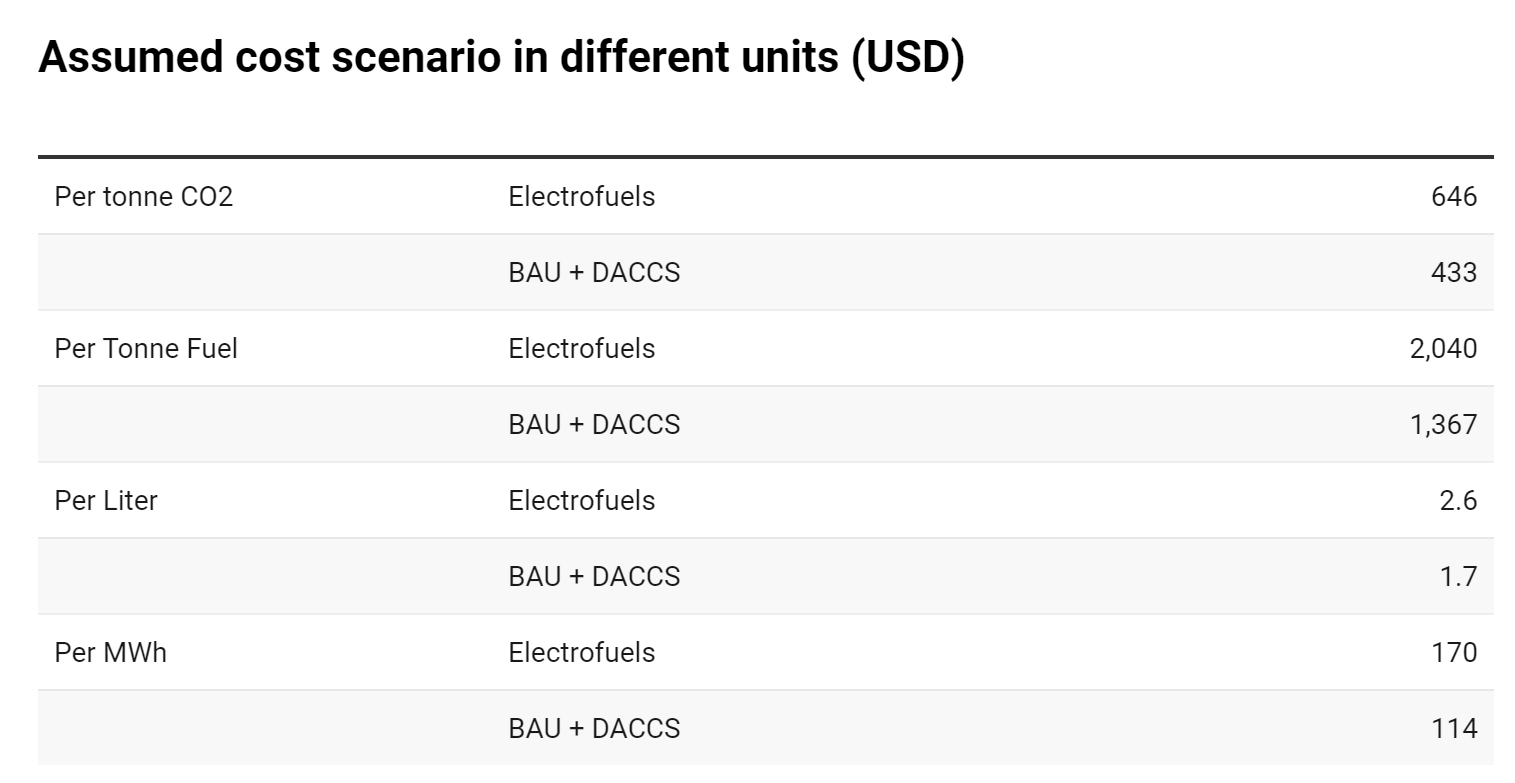· 6 min read
Continued fossil jet fuel use, neutralized with permanent carbon removal, is likely to be a more cost and resource-efficient alternative for aviation than electrofuels. This suggests that mandates to primarily use sustainable aviation fuels for the sector's decarbonization may need to be reconsidered.
Permanent carbon dioxide removal (CDR) will only play a limited role in reaching net zero, and no emissions are technically impossible to eliminate. However, for a small share of emissions, CDR will be the most cost- and resource-efficient mitigation option. Aviation is often mentioned as a key sector for the use of CDR, but political plans and industry pathways primarily rely on sustainable aviation fuels (SAF).
In this post, we compare the costs of SAF with the cost of the combination of continued use of fossil jet fuel (BAU) with Direct Air Carbon Capture and Storage (DACCS) to remove the carbon emitted in burning the fossil jet fuel. We analyze electrofuels, a form of synthetic jet fuel made with hydrogen and captured CO₂ from the atmosphere, and also compare the cost to various biofuels.

Our analysis indicates that, in most cases, electrofuels will be the more expensive option. Both electrofuels and the BAU+DACCS scenario rely on DAC (or biogenic sources such as biogas separation) as the source of CO₂, therefore the price of DAC does not matter for the comparison.
The cost competitiveness of electrofuels hinges on two key factors: the price of fossil fuels and the cost of electricity. Electrofuels require large amounts of hydrogen, needing seven times more electricity than the BAU+DACCS scenario. It only reaches cost parity with BAU+DACCS when fossil fuel prices significantly increase or electricity prices are exceptionally low. High electricity prices and/or low fossil fuel prices strongly favor BAU+DACCS.

These calculations estimate the cost in 2050, today's costs are several times higher for both options. Our calculations, methods, sources and assumptions can be explored in this spreadsheet. Our findings align with published best-case scenarios for the 2050 price of electrofuels, but note that completely novel and cheaper electrofuel production pathways could theoretically be created in the future.
Bio-jet fuels are generally cheaper than electrofuels. The cheapest is HEFA (Hydroprocessed Esters and Fatty Acids), derived from fats. HEFA is cheaper than the BAU+DACCS approach in many scenarios. However, its ability to replace traditional jet fuel is severely constrained due to feedstock availability.
Other biofuel pathways, such as the gasification of municipal solid waste and ethanol-to-jet conversions, are either on par with the cost of the BAU+DACCS model or priced higher. Moreover, biofuels come with other side effects such as emissions from land use change or the risks of land grabbing. Currently, bio-SAF production only accounts for 0.2% of global jet fuel. Even with the full utilization of all biofuel production methods, electrofuels or carbon dioxide removal (CDR) technologies would be necessary to bridge the remaining large gap.
Besides cost, feasibility and resource use need to be considered. Building out the needed zero emissions electricity for electrofuel production would be very difficult. Even with increased efficiency, electrofuels would require 9,000-10,500 kWh per tonne of CO₂. Replacing only a third of current aviation fuel with electrofuels would demand over 2500 TWh per year, equivalent to 10% of global electricity consumption. Neutralizing the same emissions using DACCS would require 410 TWh. (It's important to note that DACCS is not the only permanent CDR method available, but is used here for comparative purposes).
Emission reductions stemming from expensive alternative fuels with huge energy needs are not inherently better than carbon removal.
Overall oil demand must fall dramatically and is very likely to do so mainly thanks to electrification in the land transport sector and general decarbonization. If jet fuel is one of the last uses of oil, prices may drop and supplies last for centuries. Middle Eastern oil can for example be produced profitably at 20 USD per barrel, less than a fourth of today’s oil prices (geopolitical concerns non-withstanding). However, low oil consumption could theoretically also mean the infrastructure costs are shared by a smaller number of customers, driving costs up.
Regardless, when discussing continued limited oil use the broader environmental and social impacts must also be assessed. The extraction, processing, and combustion of fossil fuels is currently linked to significant harm to the environment and communities near refineries. These effects must be considered when evaluating options. Fossil fuels can however be produced in less harmful ways, and continued use should be coupled with stringent environmental regulations for extraction, transportation and refining. Pollution around airports is another factor to consider.
Today most decarbonization pathways for aviation mostly rely on SAFs, and CDR to a small extent. The International Air Transport Association (IATA) roadmap for example assumes 100% SAF use and only includes CDR for compensating for life cycle emissions from biofuels and non-zero emission electricity. The EU has set targets that mandate SAF to cover 2% of aviation fuels in 2025 and 70% in 2050.

This also means that airlines are not good candidates for general SBTi net zero targets that limit CDR neutralization only to the last 10% of emissions. Emission reductions stemming from expensive alternative fuels with huge energy needs are not inherently better than carbon removal.
Decision makers should consider this when making plans for net zero aviation. Three concrete policy proposals are: To include permanent carbon removal into the aviation credit scheme CORSIA, demanding it to reach 100% of credits by 2050. To develop specific SBTI sector targets for aviation. And, to include permanent CDR credits in the EU SAF mandates.
Find the data and our calculations here, and a bonus table showing the default 2050 price in different units below:

Source: Marginal Carbon
This article is also published on the author's blog. illuminem Voices is a democratic space presenting the thoughts and opinions of leading Sustainability & Energy writers, their opinions do not necessarily represent those of illuminem.






